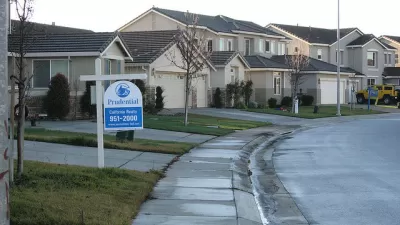With their high concentrations of marginalized Aboriginal residents, the Canadian prairie cities of Saskatoon, Regina and Winnipeg are ranked the top 3 most "dangerous" cities in the country in the latest Macleans Magazine survey.
"Surprises emerged when Maclean's went searching for Canada's safest, and most dangerous communities. Toronto and Montreal, obvious crime-ridden candidates with their well-publicized racial tensions and gun and gang violence, rank well down a danger list of the 100 largest cities or regions in the country - those of 50,000 people or more. Montreal ranks 19th on Maclean's crime list and Toronto the Good (some stereotypes are true) is a sleepy 26th, gruesome headlines notwithstanding. The most notable result is the geographic distribution of Canadian crime. Halifax is the only eastern city in the top 10. The top nine - the Wild West - stretch from Winnipeg to Victoria.
The rankings are based on 2006 per capita crime rates, the most recent available from the Canadian Centre for Justice Statistics. Maclean's created a ranking based on aggregate results of six personal and property crimes: murder, sexual assault, aggravated assault (the most serious kind), robbery, breaking and entering, and auto theft. These are similar to the crimes measured and the criteria used by Congressional Quarterly Press for its annual "Crime In Metropolitan America" report. Detroit, followed by St. Louis, Mo., has the highest overall crime of major U.S. cities. Detroit's 2006 murder rate - 47.3 per 100,000 - is 10 times higher than Edmonton, which had the highest rate that year among major Canadian cities.
The top 10 high-crime cities in the Maclean's list are led by Regina, Saskatoon and Winnipeg in a near tie at between 146.3 and 144.6 per cent above the national average. Those are followed by Prince George, Edmonton, New Westminster, Chilliwack, Victoria, Vancouver and Halifax. The reasons a city makes the top 10 list vary. Winnipeg leads in auto theft at more than 334 per cent above the national average. Robberies plagued Saskatoon, Winnipeg and Regina, all at more than 200 per cent above average. Residents of Chilliwack, Victoria and Regina endured break-ins at rates more than 100 per cent above average. Regina and Saskatoon led in aggravated assault; Saskatoon in sexual assault. (Arthabaska, Que., which sits halfway between Montreal and Quebec City, was Canada's murder city, 2006, but ranked 21st in the overall rankings.)
[T]he issues and demographics vary from city to city, but poverty and marginalization, both by race and neighbourhood, are often part of the mix. The top three high-crime communities also have proportionately the largest urban Aboriginal populations of any Canadian cities. Nine per cent of the populations of both Regina and Saskatoon are Aboriginal, as is 10 per cent, more than 68,000, of Winnipeg's population - most of them concentrated in the inner city."
FULL STORY: The Most Dangerous Cities in Canada

Maui's Vacation Rental Debate Turns Ugly
Verbal attacks, misinformation campaigns and fistfights plague a high-stakes debate to convert thousands of vacation rentals into long-term housing.

Planetizen Federal Action Tracker
A weekly monitor of how Trump’s orders and actions are impacting planners and planning in America.

In Urban Planning, AI Prompting Could be the New Design Thinking
Creativity has long been key to great urban design. What if we see AI as our new creative partner?

King County Supportive Housing Program Offers Hope for Unhoused Residents
The county is taking a ‘Housing First’ approach that prioritizes getting people into housing, then offering wraparound supportive services.

Researchers Use AI to Get Clearer Picture of US Housing
Analysts are using artificial intelligence to supercharge their research by allowing them to comb through data faster. Though these AI tools can be error prone, they save time and housing researchers are optimistic about the future.

Making Shared Micromobility More Inclusive
Cities and shared mobility system operators can do more to include people with disabilities in planning and operations, per a new report.
Urban Design for Planners 1: Software Tools
This six-course series explores essential urban design concepts using open source software and equips planners with the tools they need to participate fully in the urban design process.
Planning for Universal Design
Learn the tools for implementing Universal Design in planning regulations.
planning NEXT
Appalachian Highlands Housing Partners
Mpact (founded as Rail~Volution)
City of Camden Redevelopment Agency
City of Astoria
City of Portland
City of Laramie





























